In the summer of 2022, NASA published the first images taken by the James Webb Telescope (JWST). They instantly struck the attention of the public, hitting the news feeds and decorating the title pages of even those sites that rarely write about space.
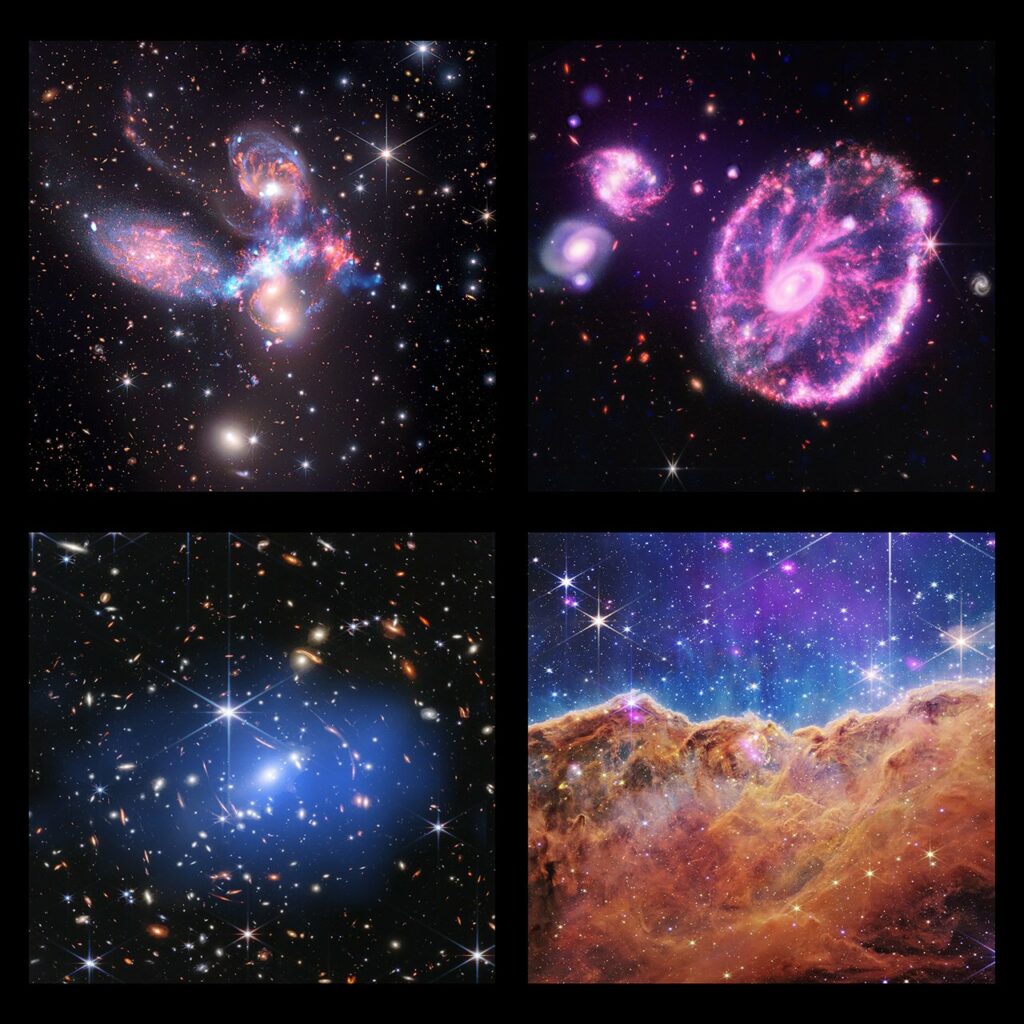
But JWST is not a kind of “lone warrior”. The telescope conducts observations in close conjunction with many observatories operating in other ranges of the electromagnetic spectrum. To demonstrate this, NASA published a series of JWST images, which were supplemented with data from the Chandra X-ray Observatory. Numerous new previously unknown details can be seen on them.
Stephan’s Quintet
The first photo shows Stephan’s Quintet — a group of five galaxies located in the direction of the constellation Pegasus. The JWST data (red, orange, yellow, green and blue) demonstrate previously unknown details of the interaction of these galaxies, including gas tails and regions of active star formation.
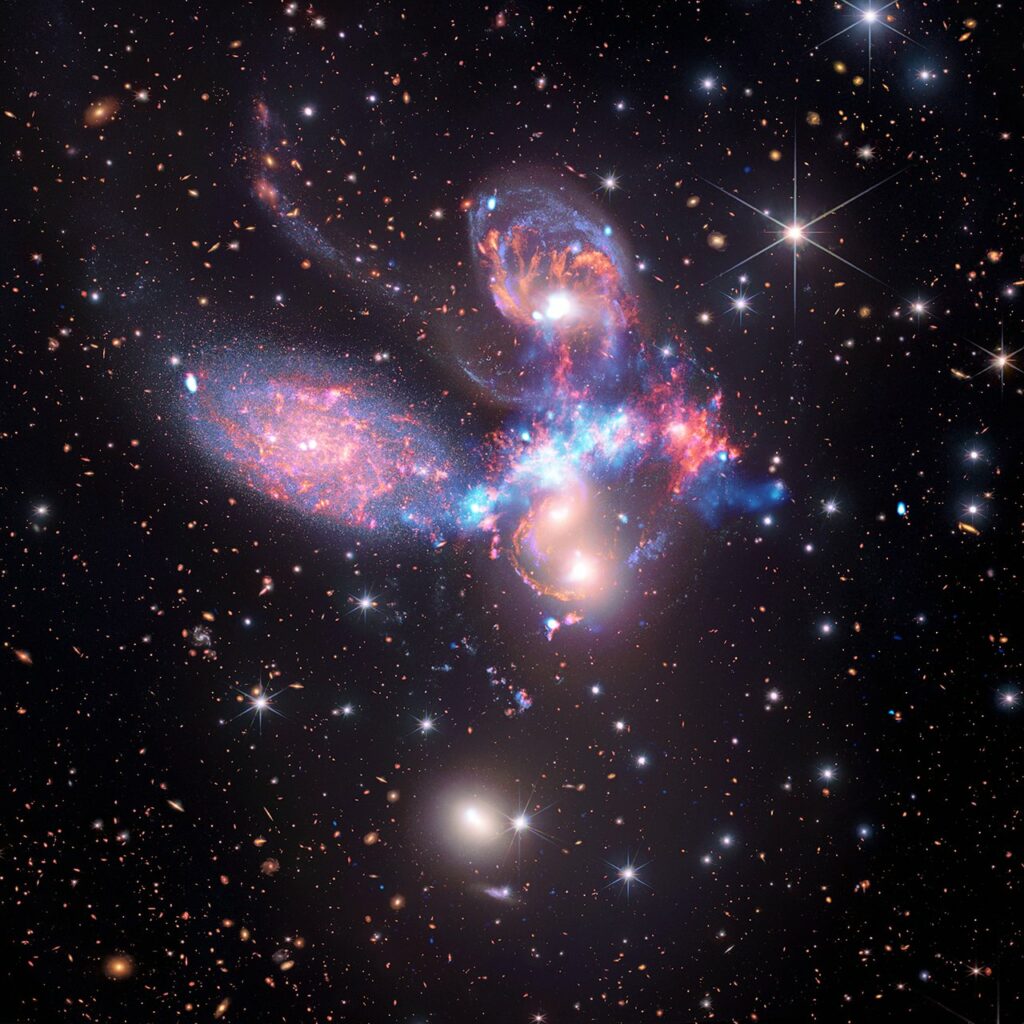
Chandra data (blue color) shows a shock wave consisting of a gas heated to a temperature of millions of degrees. It was formed as a result of the passage of one of the galaxies through the cluster. The photo is also supplemented with data from the Spitzer infrared telescope, which has already stopped working (red, green and blue).
Cartwheel Galaxy
In the second photo, you can see the Cartwheel Galaxy. It acquired its characteristic shape due to a collision with another galaxy that occurred about 100 million years ago. This event led to the formation of a shock wave that condensed the gas clouds, which triggered an outbreak of star formation. As a result, the galaxy acquired two bright rings consisting of young luminaries.
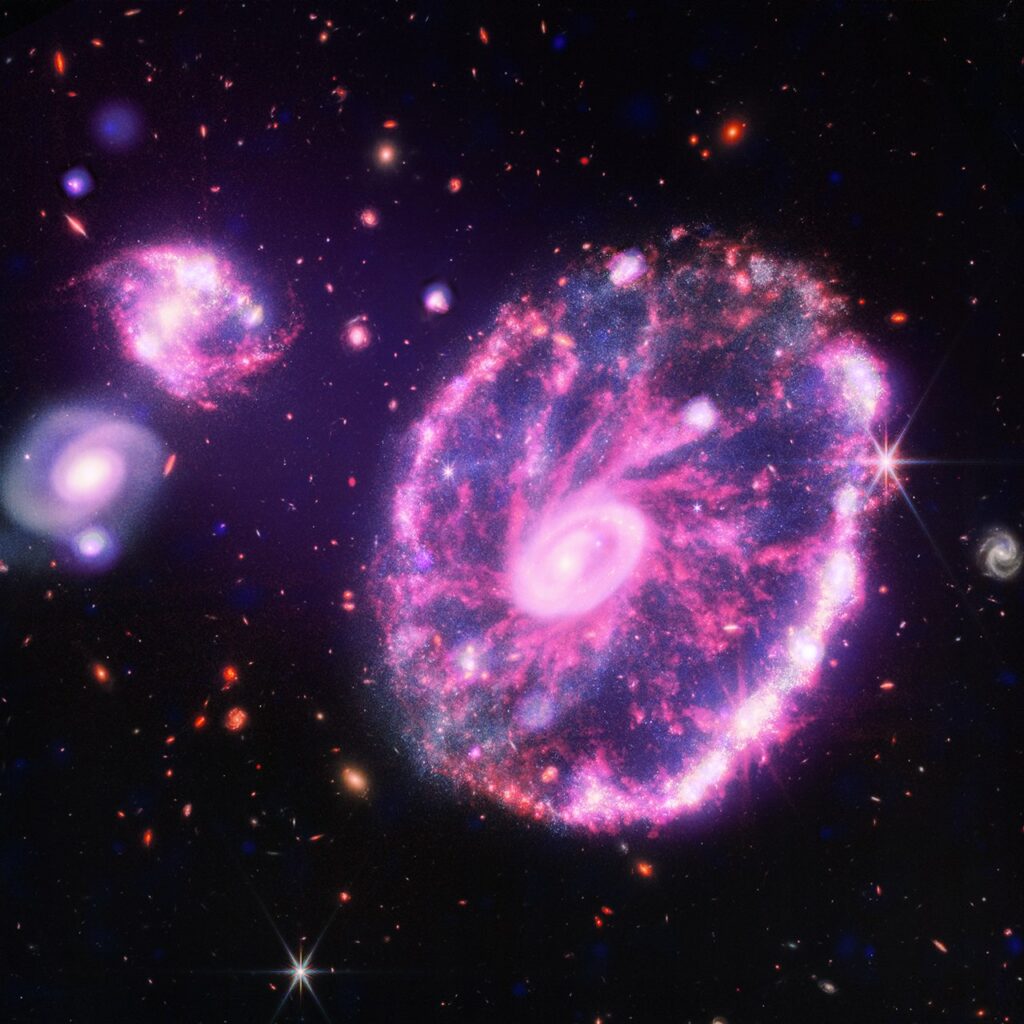
Chandra X-ray data (blue and pink) correspond to hot gas, supernova remnants, neutron stars and black holes. JWST infrared data (red, orange, yellow, green and blue) show the outlines of the Cartwheel and its two moons against the background of many more distant galaxies.
Galactic Cluster SMACS 0723
The third photo is dedicated to the galactic cluster SMACS 0723. We see it as it was 4.2 billion years ago — in the era when our planet was just formed.
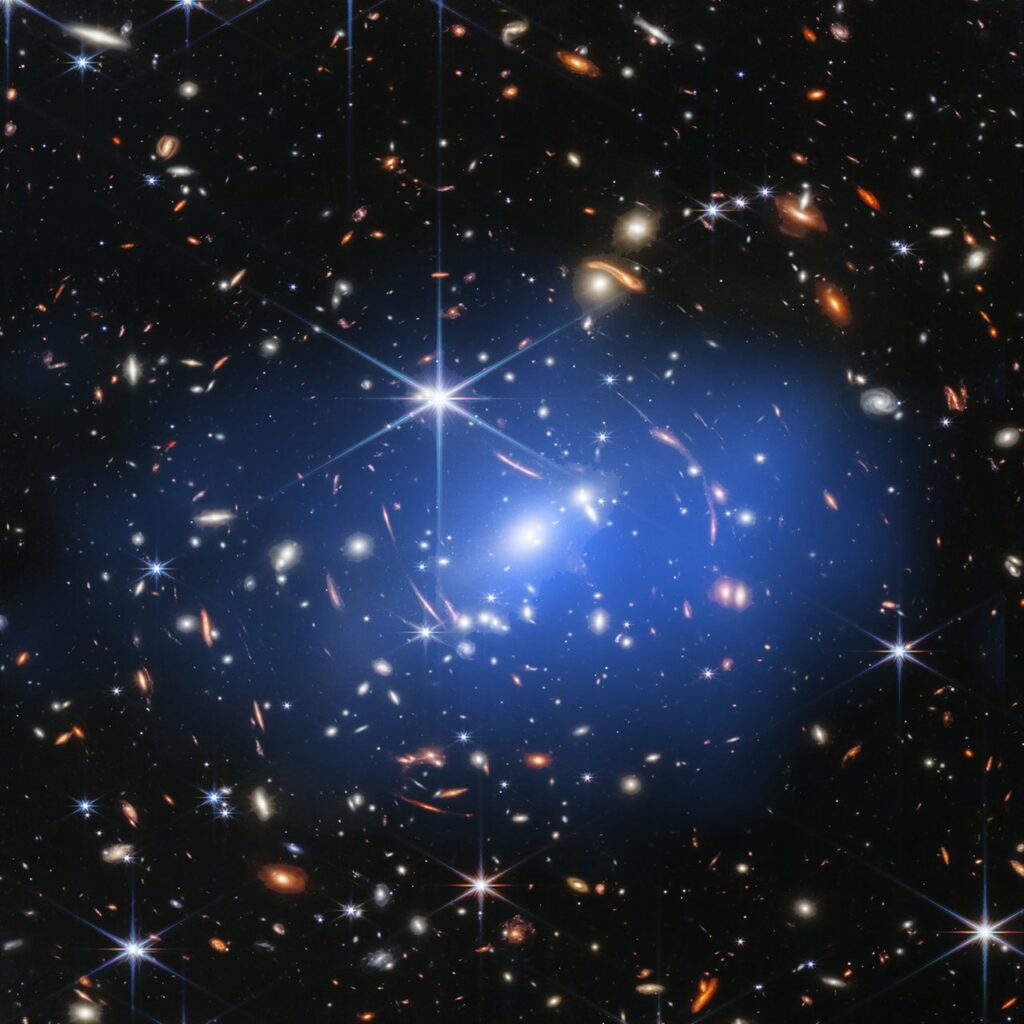
The JWST data makes it possible to distinguish hundreds of individual galaxies that make up the cluster. The Chandra data (blue) shows a giant cloud of incandescent gas surrounding SMACS 0723, which mass is 100 trillion times greater than the solar one. This is several times more than the total mass of all the galaxies that make up the cluster.
Carina Nebula
The fourth image is dedicated to the Carina Nebula. This is a region of active star formation located at a distance of 7,600 light-years from Earth. Right now, new luminaries and exoplanets are forming in its depths.
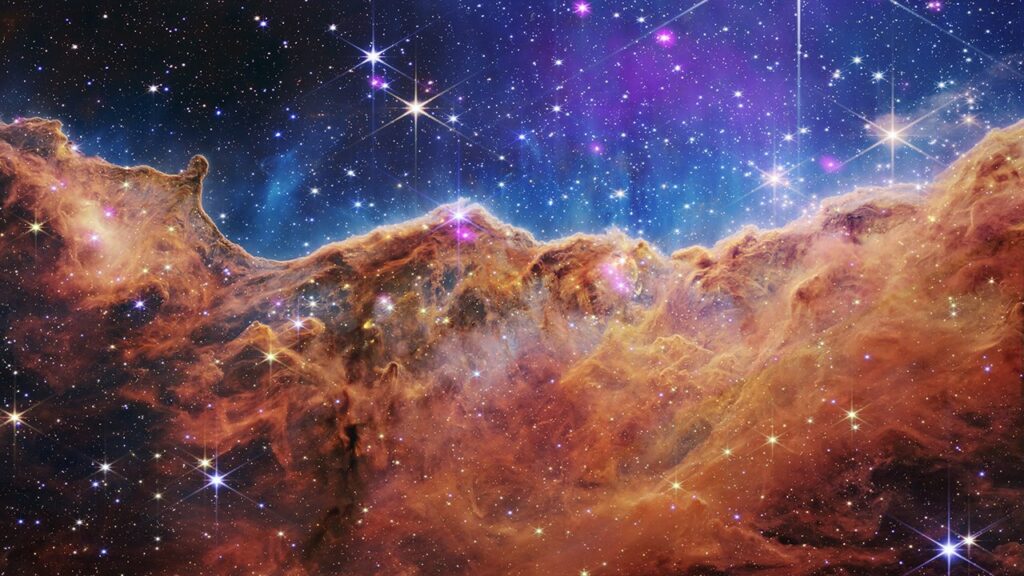
The stunning JWST image (red, orange, yellow, green and blue) shows something resembling a mountain landscape. These bizarre gas-dust structures formed in the nebula under the influence of powerful ultraviolet radiation of newborn stars. Chandra data (pink) complements this landscape with a dozen X-ray sources. Most of them correspond to newborn stars which age is 1-2 million years.
According to https://chandra.si.edu
Follow us on Twitter to get the most interesting space news in time
https://twitter.com/ust_magazine
